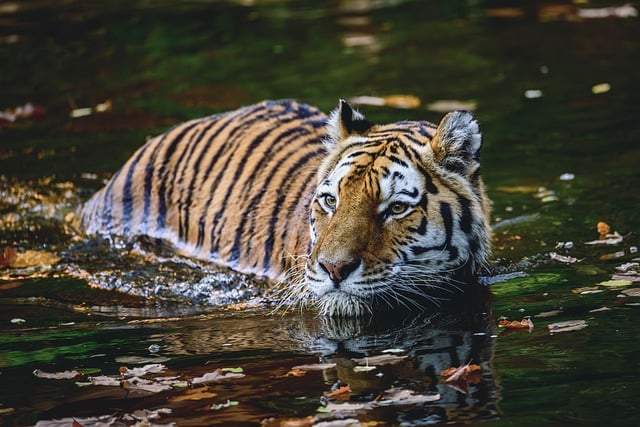Sunderban National Park 2024 | Sunderban National Park Travel Guide 2024 | Sunderban National Park 2024 | Sunderban Wildlife Sanctuary 2024 | Sunderban Jungle Safari 2024 | Sunderban Tiger Reserve | Sunderban National Park Travel Guide | Best Time To Visit | Things to do | Complete Travel Guide | Complete Information | Ticket | Timing | History
Sundarban
“Sunderbans” is a Bengali word that means “beautiful forest” in Hindi. However, the term’s origin is also attributed to the mangrove species Sundari (Heritiera foma), which is abundant in the region. If seen geographically, Sundarban is a dense mangrove forest area in the delta formed by the confluence of the Ganga, Brahmaputra and Meghna rivers in the Bay of Bengal.
The Sundarban Mangrove Forest area spread over approximately 10,000 square kilometres is divided into four parts (out of these four parts, three parts come in Bangladesh which is known as Sundarban West, Sundarban South, and Sundarban East. The fourth part is in India. Which is known as Sundarban National Park).
All four parts of these mangrove forest areas have been included in the list of UNESCO World Heritage Sites. Now it is worth noting here that about 6517 square kilometers of mangrove forest area of Sundarban comes in the part of Bangladesh, due to which Sundarban Reserve Forest of Bangladesh becomes the largest mangrove forest area in the world.
The Sunderbans in Bangladesh extend from the Balasore River in Khulna Division to the Hooghly River flowing in West Bengal simultaneously,reas the remaining forest area of 3483 square kilometres of Sundarban comes in West Bengal of India. In the Sundarbans located in West Bengal, apart from open and closed mangrove forests, you get to see agriculture, muddy, land and barren land.
Apart from this, due to the rivers flowing here in this forest area, many types of tidal currents are also formed. The Sundarbans, spread over the South 24 Parganas and North 24 Parganas districts of West Bengal, have the highest abundance of Sundari (Heritiera foam) and Geva (Exococaria agallocha) species mangroves.
This forest area is also home to 453 wild animals, 290 birds, 120 fishes, 35 reptiles, 08 amphibians and 42 mammals. Sundarban is not only famous because of the world’s largest mangrove forest area, but also because of the 180 Bengal tigers found in this entire forest area, Sundarban has its own identity in the whole world.
Out of these 180 Bengal tigers, 106 tigers are found in the forest areas of Bangladesh while 74 tigers are located in the Sunderban National Park of India.
Sunderban National Park History
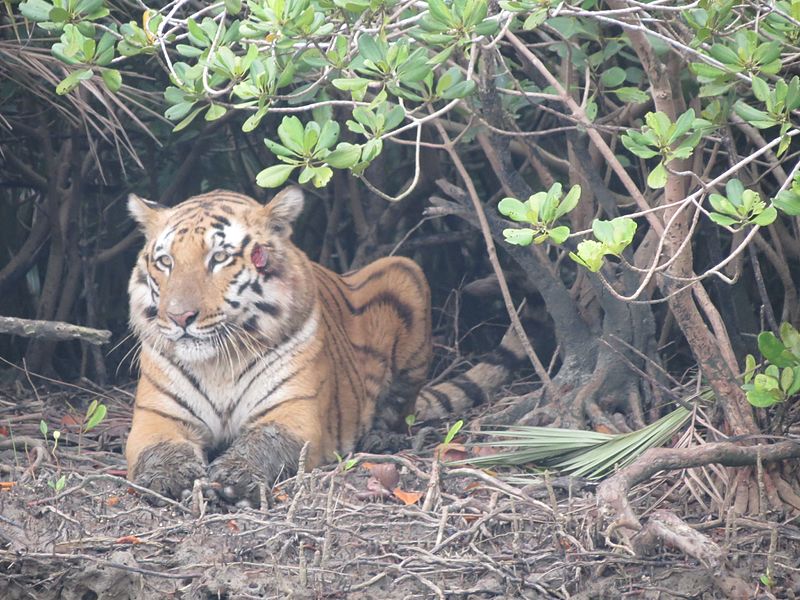
Sundarbans is a national park as well as a tiger reserve and biosphere reserve in West Bengal, India. Whose history is linked to the Maurya period (4th-2nd century BC). The credit for discovering the ruins of a city belonging to the Maurya period in the Baghmara Forest Block of Sundarban goes to Bengali folklore writer Chand Sadagar.
The Archaeological Survey of Bangladesh has discovered the ruins of a similar urban settlement dating back to the Middle Ages in Kapilmuni, Paikgacha Upazila, north of the Sundarbans. Now when we look at the Mughal period history related to this place, we come to know that the Mughal rulers had given the forest area on lease to establish settlements at this place.
Apart from this, Mughal ruler Alamgir II gave the ownership rights of Sundarban to the British East India Company in 1757. After which its mapping was completed in 1764. However, the work of managing this forest area systematically was completed after a century. After this, the first Forest Management Division was established in Sundarban in 1869.
Then, under the Indian Forest Act 1865 (Act VIII of 1865), a large part of the mangrove forests of the Sundarbans was declared a reserve in 1875. After which the remaining parts of the forest were also reserved until the next year.
Now what happened after this was that the forest which was till now controlled by the civil administration of the district. That forest had now come under the control of the Forest Department. Subsequently, in 1879, a Forest Division Headquarters was established in Khulna in present-day Bangladesh, a forest management and administration unit.
The first plan for the management of Sundarban was started between 1893-1898. This area was neither properly investigated until the year 1911 nor included in the census of that time. At that time, Sundarban was spread over an area of about 266 kilometres from the mouth of the Hooghly River to the mouth of the Meghna River, along with which some part of this forest area came within the boundaries of 24 Parganas, Bakerganj and Khulna districts.
It was estimated that the total area of the Sundarbans including water was about 16,900 square kilometres. Today’s Sundarbans National Park was first declared after independence in 1973 as the Sundarbans Tiger Reserve, and in 1977 declared a wildlife sanctuary. After this, on 4 May 1984, this wildlife sanctuary was declared a national park and in 1977 it was given the status of UNESCO World Heritage Site.
Recently in 2019, Sundarban National Park has also been given the status of Ramsar site. Apart from this, Sundarban has also been considered a World Biosphere Reserve Network in 1989.
Sunderban National Park Geography
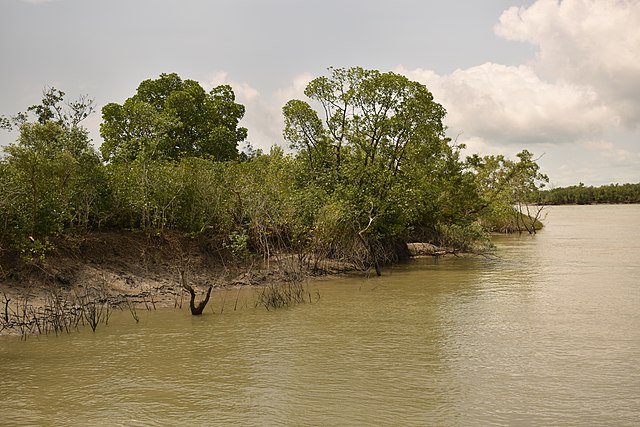
Geographically, Sundarban is a vast river delta whose height above sea level is only 7.5 meters. This delta is made up of rivers like Ganga, Brahmaputra and Meghna. This is the reason why the world’s largest mangrove forest area developed in this area, which is also the main vegetation of this place.
Apart from the mangrove forests in Sundarban, you also get to see many types of geographical diversity like salt marshes, waterways, dams and hills. The climate of this forest area is hot and humid. The geographical feature of Sundarban is beneficial in the spread of vegetation and wildlife in this area and this is the reason why diversity is seen in the vegetation and wildlife of this place.
Sunderban National Park Climate
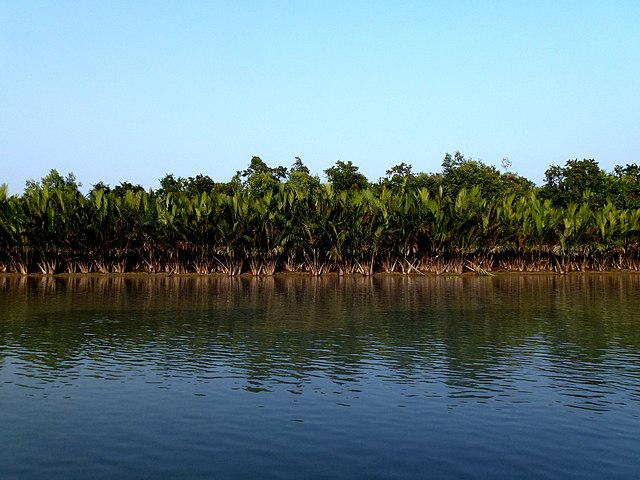
The climate of the Sundarban National Park is hot and humid. While the minimum temperature of this place goes up to only 10 degrees in winter, the maximum temperature here goes up to 48 degrees in the summer season. Due to its location near the Bay of Bengal, the humidity of this forest area goes up to 80%.
The monsoon season here starts from the second week of June and continues till the end of September and very heavy rains are seen here at this time. Apart from this, due to its location near the Bay of Bengal, sometimes cyclonic storms also occur here. Cyclonic storms are more likely to occur here between May and October.
Sunderban National Park Wildlife
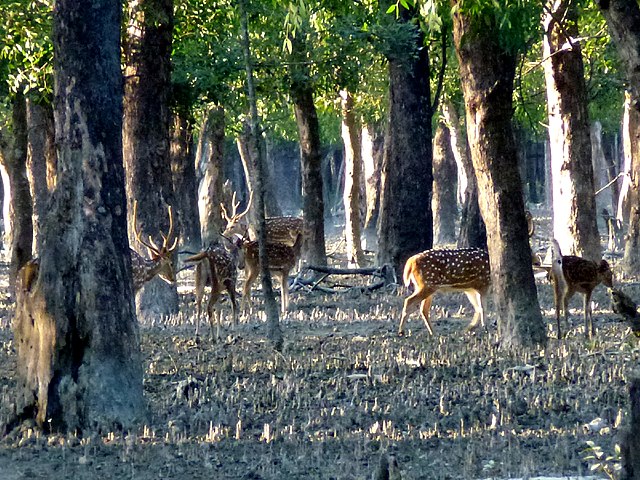
Apart from being the world’s largest mangrove forest area, Sundarban National Park is also very rich in wildlife. This forest area is also home to 453 wild animals, 290 birds, 120 fishes, 35 reptiles, 08 amphibians and 42 mammals. Known as the world’s largest mangrove forest area, this area has a special identity as the home of the endangered Royal Bengal Tiger.
According to the tiger census conducted in the year 2018, there are 270 tigers in the entire forest area of Sundarban. Apart from the Royal Bengal Tiger, you can spot wildlife like leopards, wild boar, macaque monkeys, common grey mongoose, fishing cats, spotted deer, flying foxes, jungle cats and pangolin in the Sundarbans.
Sundarban National Park Reptile
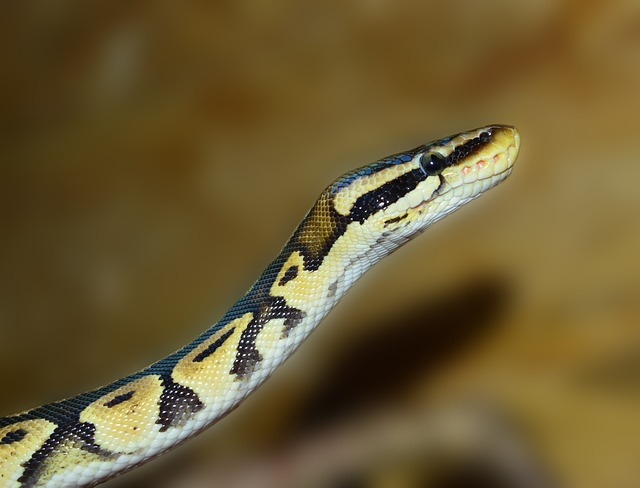
The reptiles found in Sundarban National Park, include crocodile, water monitor lizard, gharial, green-bellied snake, Salvator lizard, mouse gecko, Indian python, peacock soft-shell turtle, Indian flap-shell turtle, and checkered keelback.
Russell’s vipers, king cobras, lizards, olive ridley turtles, river terrapins, common kraits, dog-faced water snakes, water monitors, green turtles, hawk-billed turtles, sea snakes, yellow monitors, pythons, hard-shelled batgun terrapins, chameleons, estuarine crocodiles, curviers and rats are prominently found.
Sunderban National Park Birds
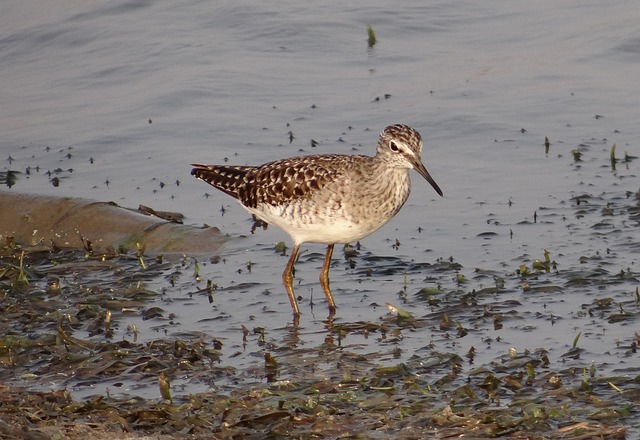
Apart from wildlife and reptiles, the Sundarbans are also home to birds including brown-winged kingfishers, osprey, white-bellied sea eagles, masked finfoots, grey-headed, Brahminy kites, black-tailed godwits, white-eyed pochard, golden plover, marsh harrier.
night heron, peregrine falcon, eastern knotweed, brahminy duck, common kingfisher, rose-ringed parrot, common snipe, white-bellied sea eagle, paradise flycatcher, cotton teal, spot-billed pelican, jungle chickens, woodpeckers, whimbrel, water chickens, green pigeons, black-headed ibis, grey herons, wild crows, great egrets, marsh pheasants, spotted pigeons, cormorants, curlews, pintails, open bill storks, lesser whistling ducks, Caspian terns, pheasant-tailed jacanas, pariah kites, Native and migratory birds like common myna, jungle babbler, herring gull, seagull, small stint, coot, red and wood sandpipers are found prominently.
Sunderban National Park Water Animals
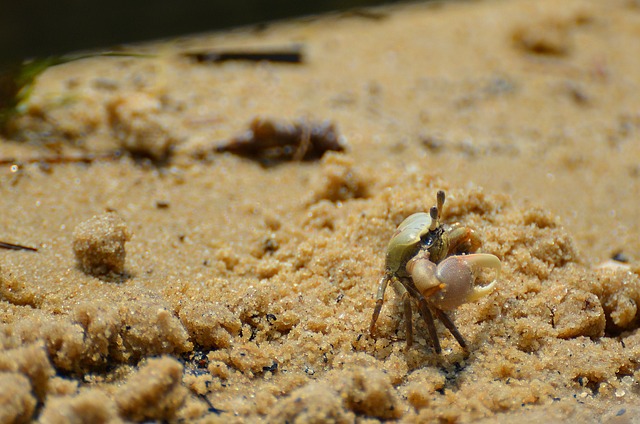
Let’s talk about the sea creatures found in Sundarban National Park. They include the Ganga dolphin, mudskipper, common toad, hermit crab, king crab, electric ray, river eel, starfish, fiddler crab, skipping frog, fishes, tree frog, Silver carp, common carp, butterfish, sawfish and gobioids which climb out of water into mudflats and can even climb trees are prominently found.
Apart from this, the mangrove forest here is also considered to be the home of crabs, prawns and small fishes.
Sunderban National Park Tourist Places
Netidhopani Watch Tower
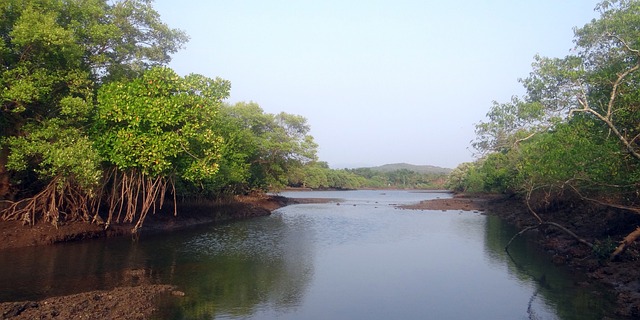
Netidhopani is a watch tower in Sunderbans which is a must-visit place to see the Bengal Tiger. Earlier there was no restriction of any kind to visit Netidhopani Watch Tower, located on the edge of the core and buffer zone of Sundarban National Park, but since 2020, only 12 boats have been allowed to go here in a day.
It is worth noting that no booking of any kind is required to go to Netidhopani. To visit this Netidhopani Watch Tower, you have to get permission from the Sajankheli Eco Tourism Range, only after that you can come here by boat. Apart from the watch tower, Netidhopani is also famous for the 400-year-old Shiva temple. However, today only the ruins of the Shiva temple located here remain.
In the archaeological discoveries made near the Shiva temple, terracotta pots have been found which have also been displayed in Netidhopani. Apart from this, there is also a freshwater pond here. Only 20 people can climb the Netidhopani Watch Tower at a time. A folk tale related to Netidhopani is widely heard here. According to the story, when a woman named Behula passed by the Netidhopani shore in a boat carrying her dead husband, she saw a woman washing clothes near the shore.
That woman was constantly being harassed by her child. Being upset with her child, the woman sprinkles some water on it, due to which the child becomes lifeless. After completing the task of washing her clothes, the woman recites some mantras and sprinkles water on her child again, due to which the child comes back to life.
After seeing all this, Behula prays to the woman to bring her husband back to life, and with the help of that woman, she brings her husband back to life.
Sajnekhali Watch Tower
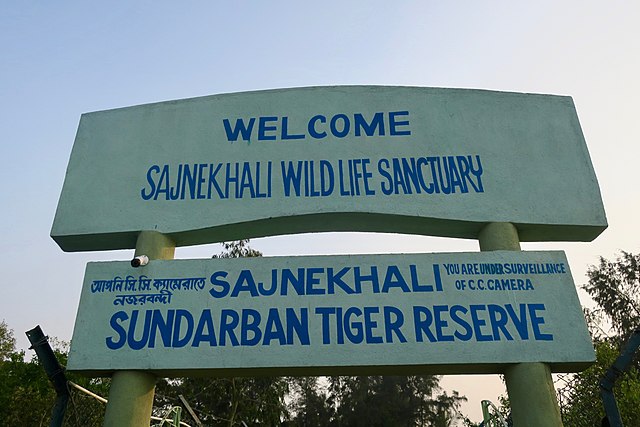
Sajankheli is the gateway to the Sundarbans National Park. To enter Sundarban, you have to get permission from Sajankheli after that you can go ahead to see Sundarban National Park. Apart from the permission counter for visiting the park, there is also a watch tower for tourists in the Sajankheli complex, which is the tallest watch tower in the entire National Park, on which 20 people are allowed to climb at a time.
The chances of seeing the Bengal Tiger from this watch tower are very high. Apart from tigers, chital, wild boar and crocodile can be seen easily from here. This place is no less than a paradise for bird watchers, there are high chances of seeing birds like Plover, Kingfisher, Lap-wings, Curfew, Sandpiper, Whimperl, White Bellied Sea Eagle and Pelican from this watch tower.
There is a freshwater pond here where wild animals come to drink water. The Sajankheli Eco-Tourism Center complex also houses the Terrapin River Hatchery, Bono Bibi Temple, Crocodile Pond and the Mangrove Interpretation Center (also known as the Sajankheli Museum).
Heliday Wildlife Sanctuary
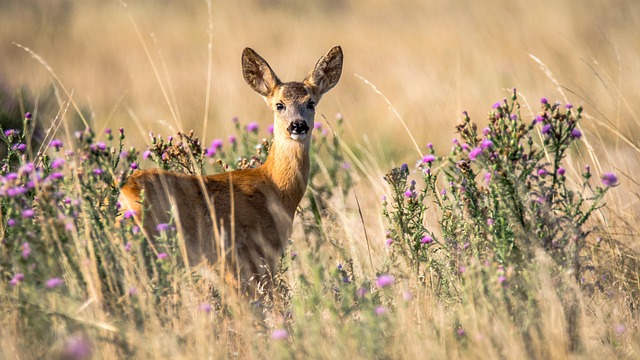
Halliday Wildlife Sanctuary, one of the smallest wildlife sanctuaries in India, is mostly known as Halliday Island. This wildlife sanctuary is the third wildlife sanctuary in the Sundarban Biosphere Reserve after the Lothian Wildlife Sanctuary and Sajnekhali Wildlife Sanctuary.
Spread over approximately 06 square kilometres, this forest area is situated very close to the Bay of Bengal at the confluence of Matla Island and Bidyadhari River. This forest area generally consists of islands of mangrove species, however, some freshwater species like Casuarina, Karanja etc. have been planted by the forest authorities as part of the afforestation programme.
Spotted deer, rhesus monkeys, wild boar and barking deer are mainly found in Halliday Wildlife Sanctuary. Apart from wild animals, many species of migratory birds and endemic invertebrates are found here. Bengal tigers sometimes come to this forest area from the Sundarban Tiger Reserve and Bonny Camp area. If you want to come here, you can reach here easily from Namkhana, Ramganga, Jharkhali and Canning.
Kalash Camp
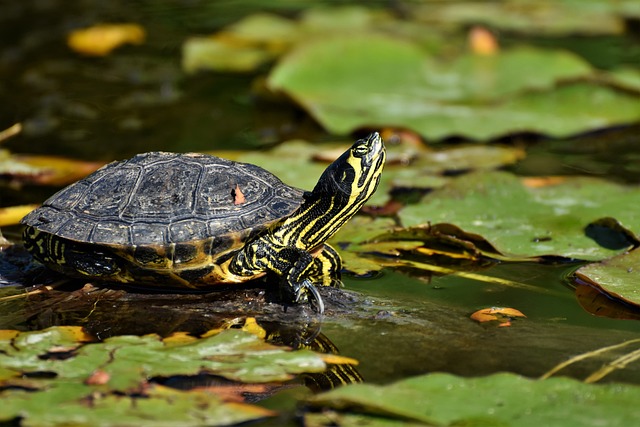
Kalash Camp is considered to be one of the best places for tourists in the Sundarbans to view marine wildlife and migratory birds. Kalash Camp, situated in the Chulkathi-1 block of 24 Divisional Forest of Sunderbans, is mostly visited by tourists coming to Sunderban National Park from Namkhana or Ramganga side.
Apart from this, landing on the shore of Kalash Island at the south mouth of Matla River is strictly prohibited, although a few years ago tourists were allowed to land on the shore at low tide accompanied by armed security personnel. But today one can visit Kalash Island only by boat. Ridley turtles can be seen in large numbers on Kalash Island during winter.
At this time of the year, the beaches of Kalash Island are also famous as a breeding ground for Ridley turtles. Apart from wildlife and marine life, Kalash Island is also home to a variety of coastal and migratory birds and is the best place to view a variety of rare aquatic life.
To reach this beautiful beach, you can easily get a boat from the Forest Department of Kalash Camp. Although there is no facility to stay at Kalash Camp, if you want to stay here then you can stay on the boat coming here.
Bhagwatpur Crocodile Project
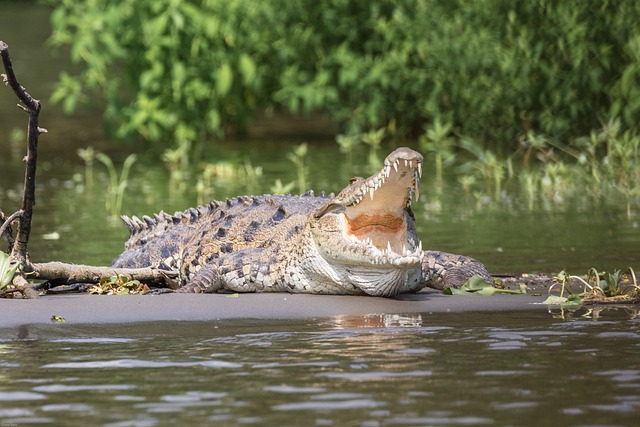
Located in South 24 Parganas Division One of West Bengal, the Bhagwatpur Crocodile Project is fast emerging as an important tourist destination for Sundarbans. Located near Lothian Island and on the banks of the mouth of the Saptamukhi River, this crocodile project is the only crocodile project in West Bengal.
Due to its location near the confluence of the Saptamukhi river system, this place is surrounded by dense mangrove forests, due to which the natural beauty of this place increases a lot, and that is why people come to see this place located in Sundarban throughout the year. Tourists keep coming.
The main objective behind starting the Bhagwatpur Crocodile Project was to feed, and nurture crocodile eggs, raise them and release them in the forest etc. At this place, you can find all types of crocodiles, small and big. If you are coming from the Namkhana side then you can reach this place very quickly.
Apart from this, if you are coming to see Ramganga, Bonny Camp and Kalash Camp, then you must take time to visit the Bhagwatpur Crocodile Project. If you wish, you can easily reach Bhagwatpur Crocodile Project from Sajankheli.
Lothian Island Wildlife Sanctuary / Lothian Island Bird Sanctuary
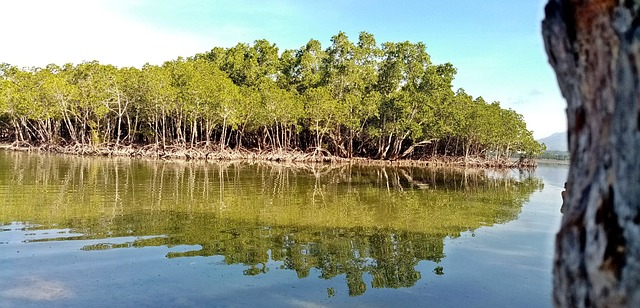
Lothian Island Wildlife Sanctuary (Lothian Island Bird Sanctuary), located near G-Plot Island in South Parganas, West Bengal, is one of the major tourist destinations of Sundarbans, spread over an area of 38 square kilometres. The forest area here provides a favourable environment for wildlife and birds to live, hence many species of birds and wildlife can be seen here.
The birds found here mainly include whimbrel, black-capped kingfisher, tern, white-bellied sea-eagle and curlew. The wildlife of this sanctuary includes spotted deer, rhesus macaques, estuarine crocodiles, wild cats and olive ridley sea turtles. Lothian Wildlife Sanctuary is also a major wildlife sanctuary, apart from three wildlife sanctuaries located inside the Sundarban Biosphere Reserve, Sajnekhali Wildlife Sanctuary, and Halliday Island Wildlife Sanctuary.
The Lothian Wildlife Sanctuary, surrounded by Saptamukhi Island, is also extremely rich in natural resources.
Sudhanyakhali Watch Tower
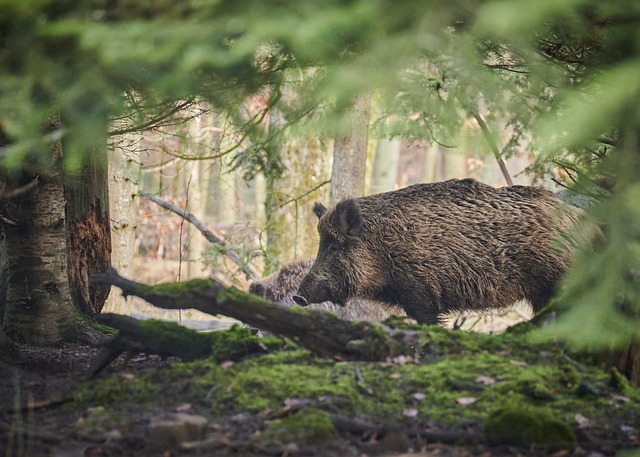
One of the most famous watch towers of the Sundarbans and being adjacent to the Sajnekhali Watch Tower, the Sajnekhali Watch Tower is one of the most visited places in the Sunderbans by tourists. By the way, the most important reason for Sudhanyakhali Watch Tower being visited by such a large number of tourists is that the chances of seeing a tiger are highest from here. Apart from this, some reptiles and birds can also be seen easily from this watch tower.
It is common to see wildlife like lizards, axis deer, wild boar and crocodiles from this watch tower. Sudhanykhali Watch Tower has a capacity of 25 tourists at a time. The forest officials of Sundarban National Park, through hard work, have succeeded in growing other species of mangroves around Sudhanyakhali Watch Tower today.
There is also a freshwater pond near this watch tower in which the wildlife living here keeps coming to drink water. The entire expanse of forest is visible behind the pond, due to which the animals coming to drink water in the pond can be seen from a distance.
Sudhanykhali Watch Tower, located in the Sundarbans, is one of the few places in the entire national park from where one can easily enjoy the panoramic views of the Sundarban Tiger Reserve and the forest extending beyond it. From this place,e you can enjoy both the nature and wildlife of Sundarban in one go.
Whenever you go to visit Sudhanyakhali Watch Tower, keep some things in mind like fiddler crabs and hermit crabs are easily found around the path and stairs leading to this watch tower, keep your feet safe from them and apart from this, stay safe in the jungle. Many monkeys are living in the area and you need to be careful of them, otherwise,e they can snatch your belongings.
Piyali River
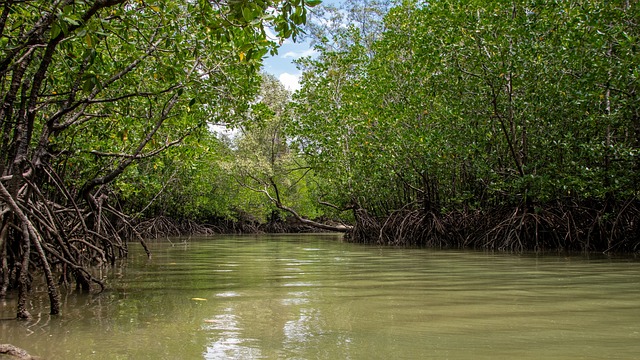
Naturally, Sundarban National Park is a very dense and beautiful national park. And Piyali is part of this national park. Located at a distance of only 72 kilometres from Kolkata by road, Piyalihas is also considered the gateway to the Sundarbans. If you are going by water then this place is near Sajankheli, Sudhnyakhali and Netidhopani. Piyali is a small river flowing through the fields of West Bengal which later joins the Matla river.
The naturally rich Piyali Delta is considered a very good tourist destination to spend holidays, which is why the banks of the Piyali River are considered an ideal place for tourists and nature lovers. Most of the tourists who come to visit the Piyali River located in the Sundarbans prefer boating, this is because the Piyali River and the rich vegetation of the Sundarbans can be seen comfortably through boats. Also, if your luck is good, you will get to enjoy the boating experience. Many rare wildlife of Sundarban can also be seen.
Tin Kona Island Sundarban
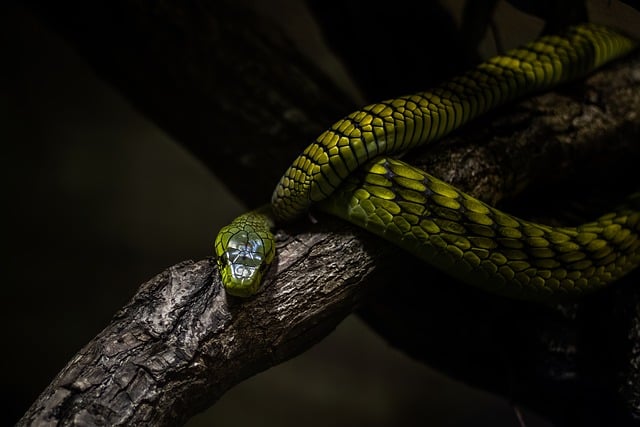
Tin Kona Island, located in the Sunderbans of West Bengal, is one of the most visited and liked places by the tourists visiting this national park due to its variety of wildlife and flora. In Tin Kona Island, you can easily spot wildlife and reptiles like the Royal Bengal Tiger, Crocodile, Leopard, Spotted Deer, Primates, Rattle Snake and King Cobra.
Apart from this, this place is considered to be the most suitable place in Sundarban for activities like fishing. Overall, Tin Kona Island is considered an ideal place for tourists who like adventure activities, which are rich in wildlife and botanical wealth. The best time to visit Tin Kona Island is considered to be the months of February to April and September to November.
Tourists visiting Sundarban can reach this place with the help of a safari. Tin Kona Island, located in the Sundarbans, is located at a distance of about 30 kilometres from Siliguri City of West Bengal.
Sundarban National Park Entry Fee
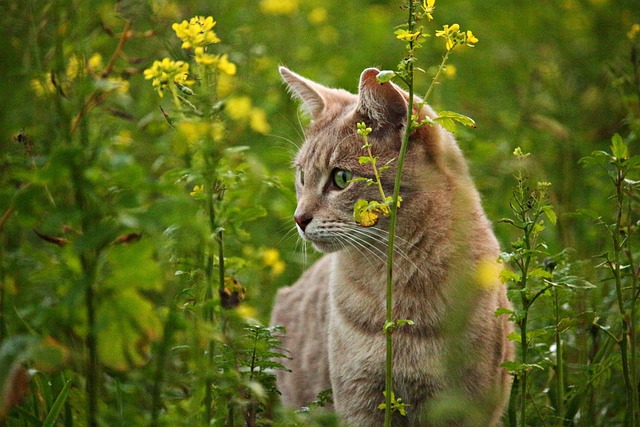
The entry fee for Indian citizens in Sunderban National Park has been fixed at Rs 60/-, while for foreign citizens the entry fee for the park has been fixed at Rs 200/-. The park entry fee is exempted for children aged 05 years and below, apart from this, if you are a student then you can get a 50% discount on the park entry fee by showing your ID.
You can pay the entry fee for Sundarban National Park at Sajnekhali, Bagna, Sonakhali apart from the Field Director’s office.
Boat Safari Timings in Sundarban National Park

Unlike other national parks of the country, jeep safari is not organized in Sundarban National Park, rather boat safari is organized here. The timing of boat safari in this national park is from 08:30 am to 04:00 pm. Entry of boats is completely prohibited in this park after 06:30 pm.
Boat Safari in Sundarban National Park
Sundarban National Park, located in the Bay of Bengal, is a dense mangrove forest area in the delta formed by the confluence of the Ganga, Brahmaputra and Meghna rivers. Apart from being a mangrove forest area, the wildlife of this national park also attracts tourists from all over the world. This is the reason why lakhs of tourists from all over the country and the world come to see Sundarban throughout the year.
But like other national parks of the country, jeep safari is not conducted here, rather boat is used for safari here. The fee for a boat safari in this national park depends on which boat you are doing the safari on.
For example, if you book a 04-hour safari on a 6-seater boat, then the fee for that safari remains between Rs 2800-3000. Similarly, for a 4-hour safari in a boat with ten seats, you may have to pay Rs 4500-5000. If you want, you can also book a full day boat safari but for that, you will have to pay Rs 8000-8500 for a 6 seater boat, and for a 10 seater boat safari you will have to pay Rs 12000-13000 as safari fee.
Apart from this, you also have to keep in mind that both AC and NON-AC boat safaris are available in Sunderbans and separate safari fees will have to be paid for both these types of boat safaris.
Guide Fee in Sundarban National Park

Whenever you go to visit Sundarban National Park, you will need a guide to see and understand this park properly. Therefore, whenever you go to see this national park, you have to pay a separate fee for the guide. In this park, you will have to pay a guide fee of Rs 400 for a half-day boat safari and Rs 700 for a full-day boat safari.
Whereas if you book an expert guide for yourself, then for a day boat safari you will have to pay a guide fee of Rs 1500 and for a full day boat safari you will have to pay a guide fee of Rs 2500.
Camera Fees in Sundarban National Park

If you are taking a camera with you to Sundarban National Park, then the administration here has fixed some camera fees which are as follows. The charges have been fixed for still camera – Rs 200/- per day, video camera – Rs 500/- per day, professional still camera – Rs 5000/- per day and professional video camera – Rs 10000/- per day.
Other charges in Sundarban National Park
Apart from boat safari, guide fee and camera fee, you may also have to pay some types of charges in Sundarban National Park like a parking fee – of Rs 50/- per day and a camping fee of Rs 300/- per day.
Sundarban National Park opening and closing timings
Sundarban National Park is open to tourists throughout the year. This national park is open for tourists from 08:30 am to 04:00 pm. Boat safari is not allowed in this park after 06:30 pm.
Best time to visit Sundarban National Park
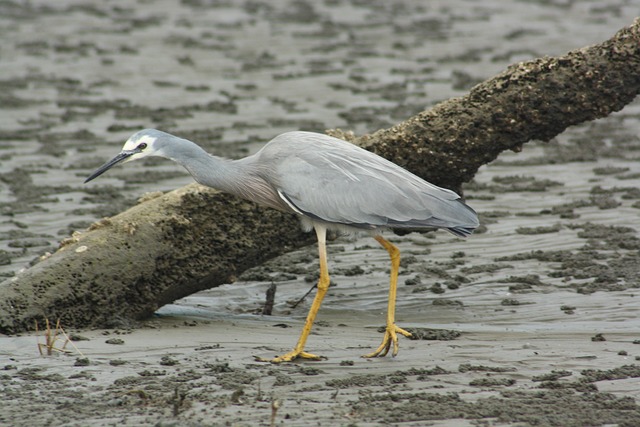
Although Sundarban National Park is open for tourists throughout the year, if we talk about the best time to visit this national park, then the best time to visit this national park is from the last week of November to the first week of March. It is considered a good time.
Local Food to Eat in Sundarban National Park

There are very limited food options available in Sundarban National Park. But you will find both vegetarian and non-vegetarian food available here.
Hotels in Sundarban National Park

There are many private hotels and government guest houses built around Sunderban National Park and inside the park. If you want, you can book a room in a hotel or guest house online on any hotel booking website or the official website of the park before coming here.
How to reach Sundarban National Park
How to reach Sundarban National Park by flight

The nearest airport to Sundarban National Park is Netaji Subhash Chandra Bose Airport in Kolkata. The distance of Sundarban from Kolkata is only 110 kilometres. From Kolkata, you can easily reach Sundarban by bus, taxi and cab.
How to reach Sundarban National Park by train

The nearest railway station to Sundarban National Park is Canning. Canning Railway Station, located at a distance of about 50 kilometres from Sunderbans, is very well connected to Sealdah Railway Station. From Canning, you will easily get bus services to Sundarban.
How to reach Sundarban National Park by road

Sunderbans is very well connected to Kolkata and many other cities of West Bengal. Apart from this, you can easily reach Sundarban by road with your vehicle. You can get regular bus services from Sonakhali, Godkhali, Namkhana, Canning, Raidih or Najat.
(If you have reached here in this article of mine, then I have a small request to you please share your suggestions related to this article in the comment box below, and if you find any deficiency or any wrong information, please do so. Please tell me. I keep posting information related to travel on my website. If you like the information given by me, then please subscribe to my website with your email, thank you.)

